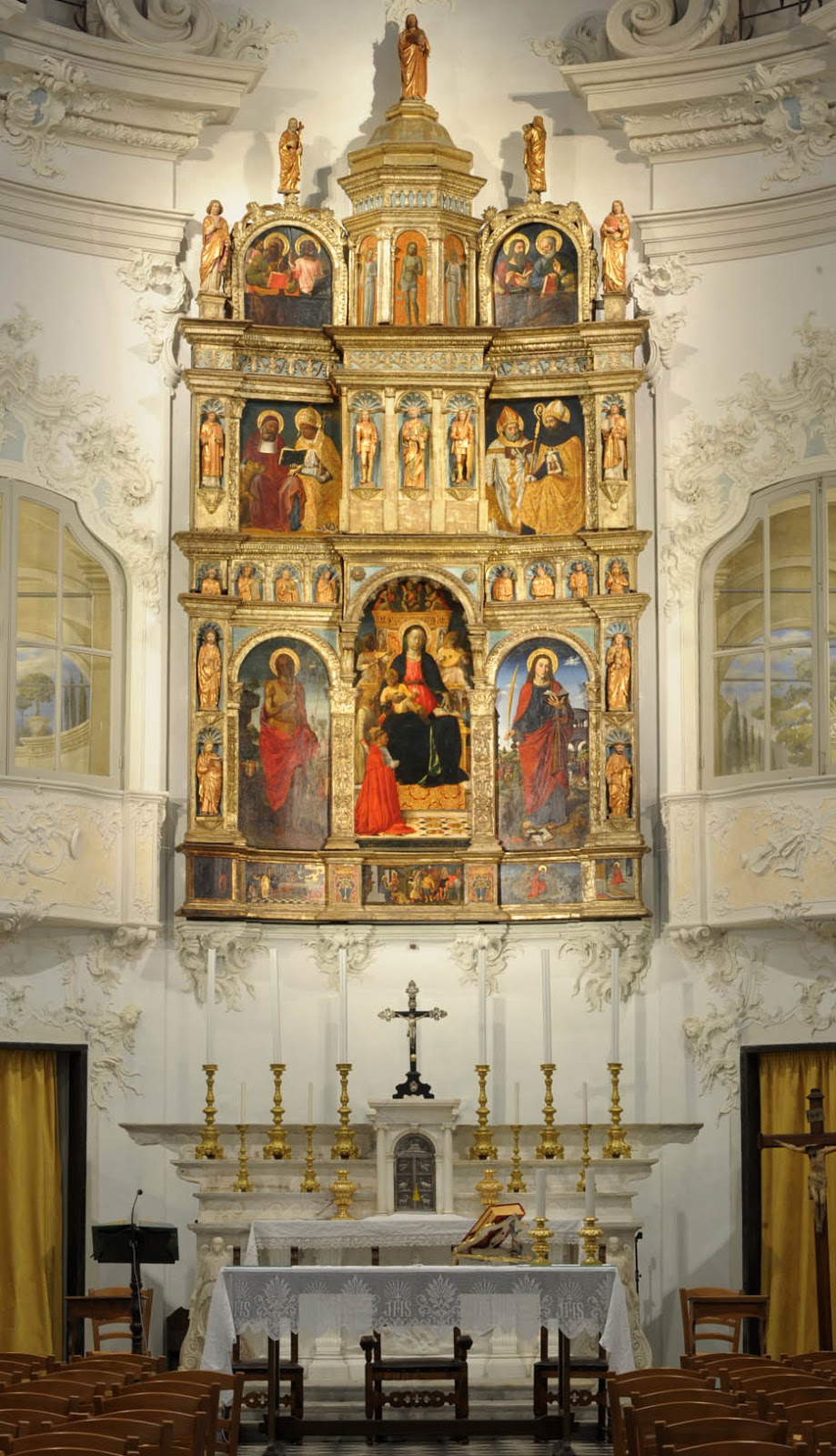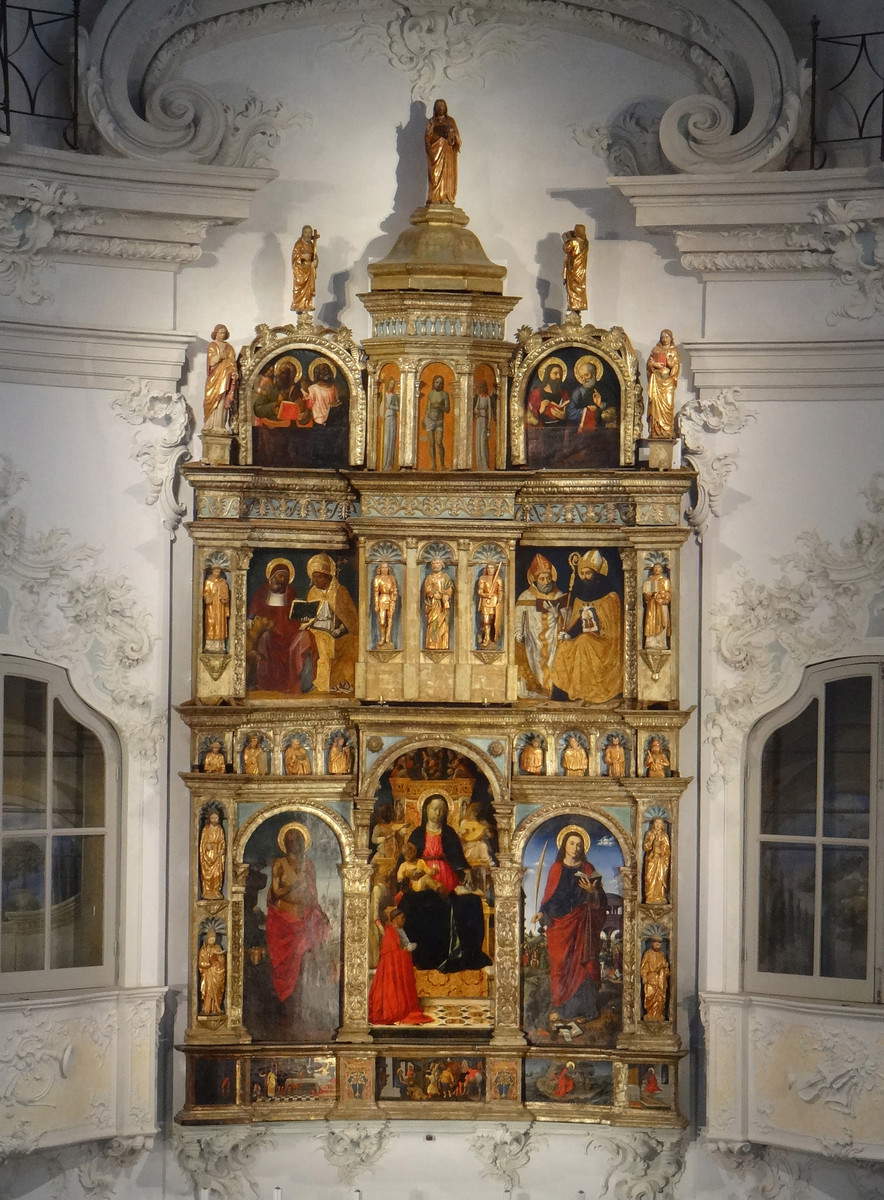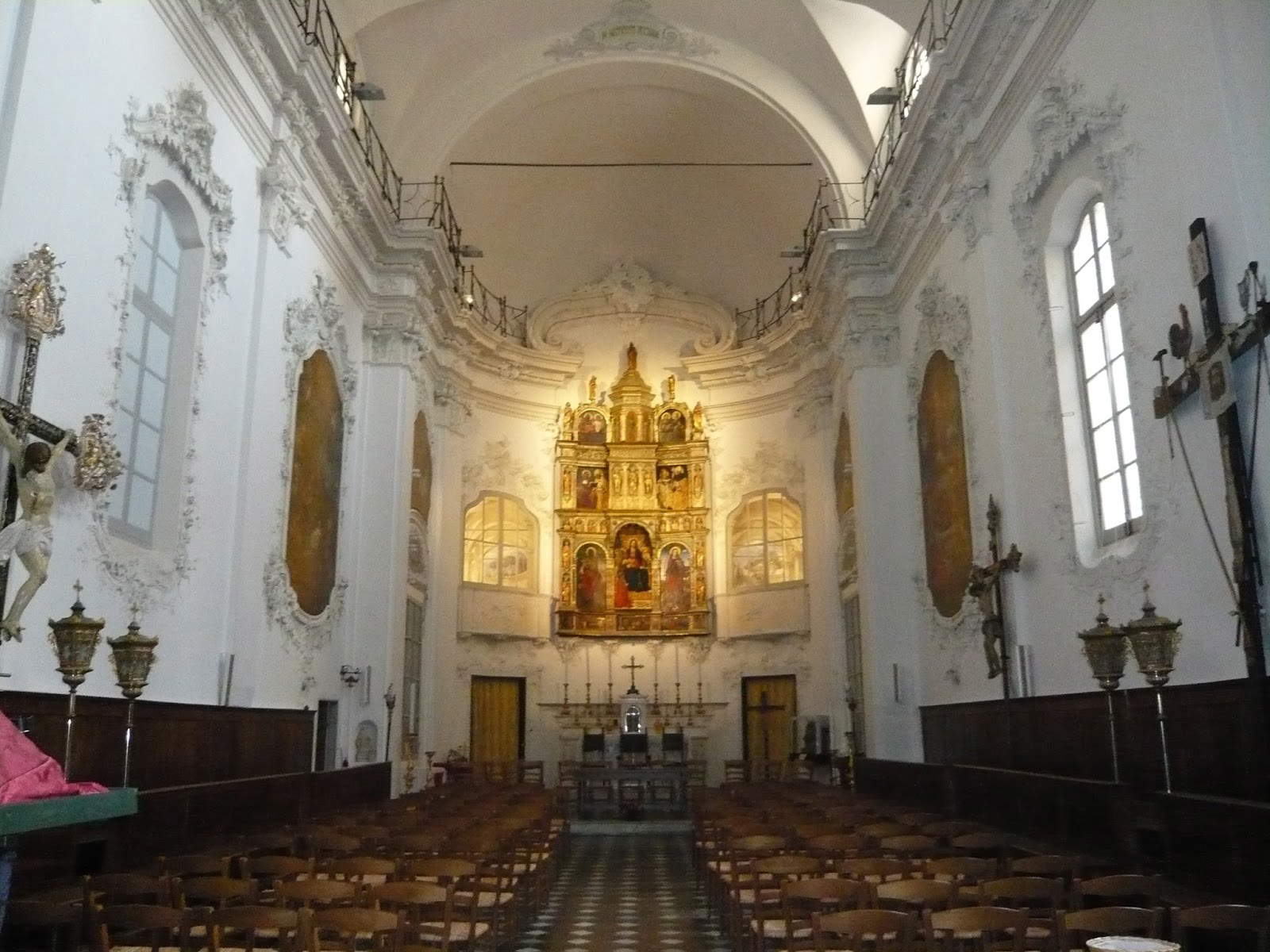The city of Savona, nestled on the western coast of Liguria, is recognized not only for its natural beauty and thousand-year history, but also as a significant cultural center of the Italian Renaissance. The promotion of the arts in the city had a significant boost from the 15th century onward thanks to the patronage of the powerful local Della Rovere family.
Among the family’s most influential figures were Francesco Della Rovere, who in 1471 became pope, assuming the papal nomen of Sixtus IV, and his nephew Giuliano Della Rovere, who ascended to the papal throne in 1503 as Julius II. The Della Rovere family was notable for their support of the visual arts, commissioning numerous works of art that still adorn churches and oratories in the city, a tangible example of their commitment to promoting the Della Rovere image in their homeland.
One of the most celebrated masterpieces is the majestic Della Rovere Polyptych, named after its patron Giuliano Della Rovere. This extraordinary work, created by Vincenzo Foppa (Brescia, c. 1427 - c. 1515) and Ludovico Brea (Nice, c. 1450 - c. 1522) and completed in 1490, is a clear testimony to the artistic support offered by the Della Rovere family and embodies one of the most significant symbols of their cultural legacy in the city of Savona.
The fascinating history of the magnificent polyptych, currently housed in theOratory of Our Lady of Castello, a church hidden among the nineteenth-century buildings, has been the subject of intense study by distinguished scholars in recent centuries. These include Federico Alizeri, who devoted himself to the study of the polyptych at the end of the 19th century, and, during the 20th century, the illuminating studies of Pasquale Rotondi and the contributions of William Suida, Antonio Morassi, Giulio Carotti, Fernanda Wittgens, Gianni Carlo Sciolla and Massimo Bartoletti.
The work was commissioned by Giuliano della Rovere for the high altar of the cathedral of Nostra Signora di Castello, located on the Priamàr hill. However, in 1543 the church was closed to worship and later destroyed by order of the Republic of Genoa to allow the construction of the fortress that still stands there today. The cathedral, along with the oratories and other religious buildings that formed a kind of Savona Christian acropolis, was razed to the ground. Among the destroyed buildings was also the first headquarters of the confraternity of Our Lady of Castello, a religious congregation to which Julius II and Sixtus IV belonged. After the closure of the religious buildings on the Priamàr hill, there was a widespread movement of the confraternities and works of art to new spaces. The polyptych found its final location only in 1570, when it was placed in the new oratory of Nostra Signora di Castello, rebuilt in 1544.



Beginning in the first half of the seventeenth century, the polyptych underwent several disassemblies and reassemblies. In the mid-18th century, the oratory was hit by fire and, following renovations, took on its current appearance with special Rococo stucco work by Giuseppe Petonti. Scholars believe that the cornice may have been reduced to fit the space of the oratory. In 1797, the work was dismantled again because the church was converted into a barracks. The February 23, 1887 earthquake caused the vault of the hall to collapse, but the polyptych remained intact. In the following years, in 1909, a fire severely damaged the work and made the left part of the predella depicting the Baptist unrecoverable. During World War II it was disassembled, packed up and safely placed in an air raid shelter. After the conflict ended, the polyptych was restored several times in the immediate postwar period. During the five-year comprehensive restoration of the polyptych, which was completed in 2006, significant discoveries were made. On the back of the wooden statuette depicting the Announcing Angel, an annotation with the date “1755” was found, and in addition, a payment document related to restoration work was found. This evidence led scholar Massimo Bartoletti to confirm that the Della Rovere polyptych was indeed restored in that year by Savona painter Giovanni Agostino Ratti, father and master of the more famous painter and historian Carlo Giuseppe Ratti.
The work was begun by Vincenzo Foppa, but work was interrupted on April 9, 1489 due to the artist’s move to Pavia. The Savona community then had to turn to the dukes of Milan to recall him, and Foppa was joined by the Nice artist Ludovico Brea. Foppa completed his part on August 5, 1490, while Brea laid down his brush on the 10th of the same month and year, as indicated by the inscription at the base of the central compartment: “ANNO SALUTIS 1490 DIE V AUGUSTI IUL. EPISC. OSTIEN. CARD. S.P. ADVINCULA MAIORA NITENT VICENCIUS PINXIT. LUDOVICUS - BREA NICENSIS - PINXIT HAC. PART 1490. DIE X AUGU.STU COMPLECTA.”
As for the majestic gilded woodwork and wooden statuettes of sacred subjects, once polychrome, Alizeri attributed them to the carver Bertolino della Canonica. However, in the 1950s, Rotondi hypothesized that the general idea of the polyptych may have been conceived by Vincenzo Foppa, based on the two-dimensional pictorial application of Bramante’s illusionism and the overall structure of the altarpiece that recalls other 15th-century polyptychs produced in the Lombard area. This hypothesis was also later confirmed by Fernanda Wittgens.
The Renaissance polyptych is imposing in size, with a height of about five meters and a width of 3 meters. It consists of three registers arranged in a fan shape, with two wings spread out toward the viewer. Its top is surmounted by a polygonal tabernacle with a wooden sculpture of Christ holding the globe. The panels are separated by Corinthian pilasters and enclosed in a larger Doric structure, adorned with wooden statuettes inserted in tabernacles or placed freely on the top of the structure, along with classically inspired decorative motifs. The predella presents the stories of St. John the Evangelist. In the first central register is the large panel depicting the Madonna and Child, surrounded by musician angels and with the patron, Giuliano della Rovere, kneeling.On the sides are the panel depicting St. John the Baptist and the panel depicting St. John the Evangelist. In the second register are the Doctors of the Church: on the left, Saints Jerome and Gregory the Great; on the right, Saints Ambrose and Augustine. The third register depicts the four Evangelists: in the left panel, Saints Matthew and John; in the right panel, Saints Luke and Mark. The upper polygonal tabernacle depicts Christ “Holy Blood,” with two angels bearing symbols of the Passion. Scholars argue that Brea’s intervention is most evident in the right wing of the polyptych, in the panels depicting St. John the Evangelist, Saints Ambrose and Augustine, and Evangelists Luke and Mark. The iconographic choice reflects Giuliano Della Rovere’s Catholic thought, particularly the idea of man touched by divine grace and the manifestation of God in human history through his son Jesus Christ.
In 2015, a request was made for the loan of the Della Rovere Polyptych for the exhibition Arte Lombarda dai Visconti agli Sforza that took place at the Palazzo Reale in Milan during the Expo. However, the request was rejected due to the extraordinary importance and fragility of this work. The Della Rovere Polyptych represents one of the finest Renaissance masterpieces in Liguria and symbolizes the patronage of the noble Savona family. The work possesses unparalleled beauty and unique international value. A visit to the polyptych represents an essential experience for all those who wish to immerse themselves in Ligurian art and art history.
Warning: the translation into English of the original Italian article was created using automatic tools. We undertake to review all articles, but we do not guarantee the total absence of inaccuracies in the translation due to the program. You can find the original by clicking on the ITA button. If you find any mistake,please contact us.